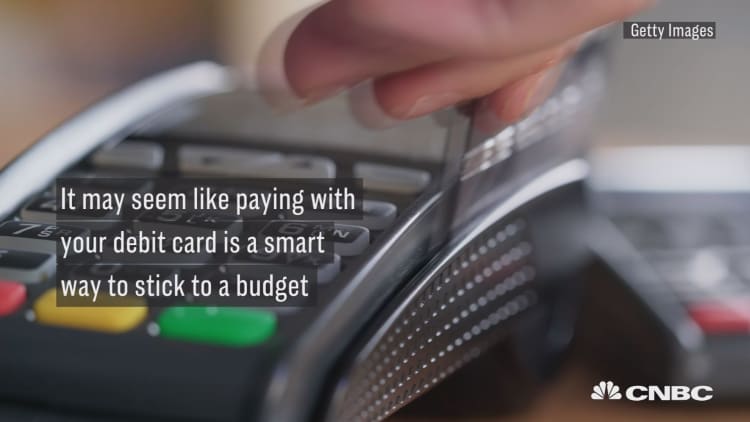Anyone carrying burdensome credit-card debt knows how those zero percent (or low-rate) balance-transfer options can feel like a lifeline.
And if you approach them right, they can help you hack away at your debt much faster and reduce how much you pay in interest. Yet more than 40 percent of consumers who take advantage of these deals don't get the balance paid off during the special-rate period, according to a new study from CompareCards.com.
Depending on how much more than the monthly minimum you pay during that introductory time, you could end up making little headway in paying down your debt.
"To get the biggest bang out of the balance-transfer card, you have to pay more than the minimum, or you won't save nearly as much in interest as you could," said Matt Schulz, chief industry analyst at CompareCards.
Consumer credit card debt stands at $974.2 billion, according to WalletHub. The average interest rate across all cards is about 17 percent, although it can reach as much as about 30 percent on some cards — thus the lure of a balance-transfer offer.
Before you assume it will be the answer to your debt woes, however, it's worthwhile planning how to make sure the move will help get your debt paid off, rather than just give you temporary breathing space and relieve your stress level.
Say you have a $10,000 balance on a card that comes with an interest rate of 20 percent. You transfer the entire amount to one with zero percent for 12 months, with minimum monthly payments of $150.
Also assume that the deal comes with a transfer fee of 3 percent, or $300, and that whatever balance remains at the end of the introductory period will be subject to the standard interest rate at that time.
So, you owe your new creditor $10,300. If you pay the $150 monthly minimum, your balance after 12 months would be $8,500. Say the interest rate on it is then 17 percent. If you continue paying $150 monthly, it would take you more than 21 years to pay off that remaining balance. You'd also pay more than $28,000 in interest.
Meanwhile, to pay off the full $10,300 during that one-year introductory period, you'd need to pony up about $859 monthly.
That amount is only $67 per month less than the $926 you would have needed to pay off that $10,000 in one year if you had left it on the 20 percent card (although that amount includes about $1,100 in interest).

"If your ultimate goal is to pay down credit card debt as quickly and cheaply as possible, you're doing yourself a disservice if you only pay the minimum," Schulz said.
To stay on track toward getting that debt paid off, figure out how much you realistically can pay each month. Having a plan to tackle the remaining balance after the introductory-rate period can also help.
Of course, you do yourself no favors if you continue racking up balances on other cards.
"You'd be defeating the purpose of what you're trying to do," Schulz said. "Balance-transfer cards are really a test of the cardholder's discipline."
Additionally, you can run into unexpected tailwinds if you pile on another balance transfer on that card before wiping out the first. Or if you make new charges on the card that are subject to interest.
While the specifics of each card vary, not all of your minimum payment is applied to the higher-rate balance — only amounts above the minimum must go toward the portion of the balance with the highest rate, Schulz said.
Some consumers also end up transferring unpaid balances to another zero-percent or low-rate offer, which can be a good strategy for keeping interest payments to a minimum. Just keep in mind there's no guarantee that you'll be able to get another one a year or more down the road.
More from Personal Finance:
Americans spend nearly two hours a day shopping online at work, study suggests
7 year-end tax tips to boost your refund
This is what your addiction could really be costing you
WATCH: Here's why you should think twice before using your debit card



